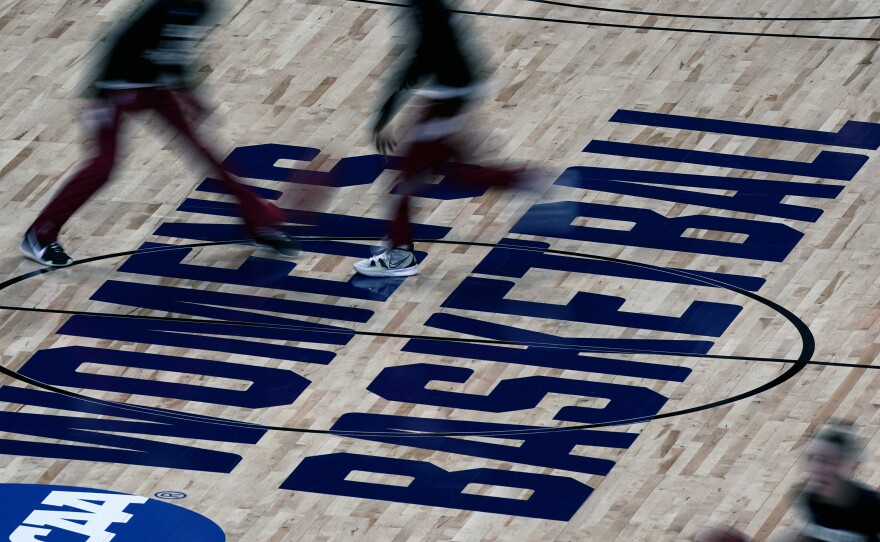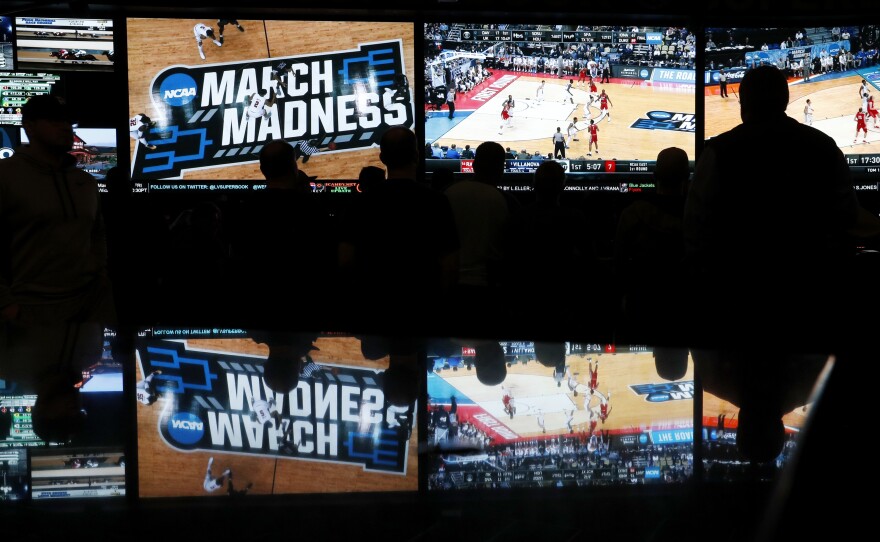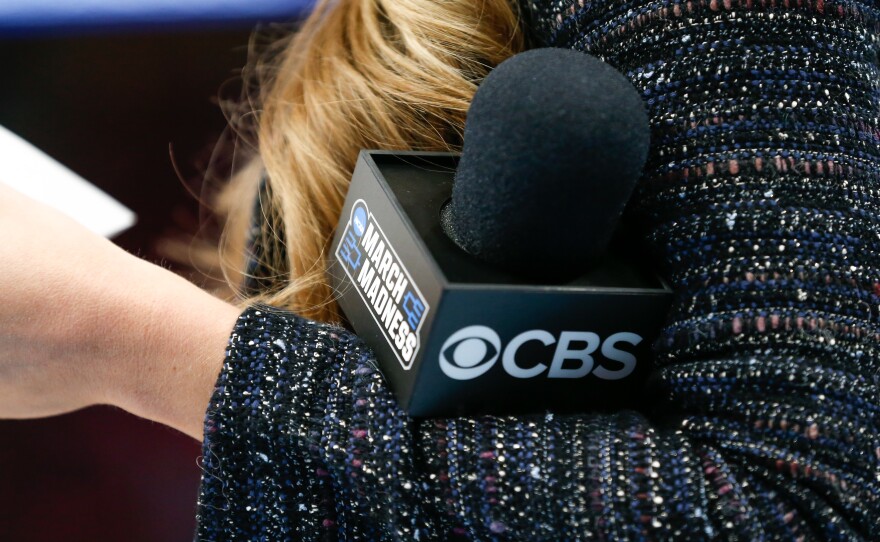The NCAA spends more on male athletes than female ones on average, especially when it comes to the few championship events seen as the organization's big money makers.
"The mere handful of championships" viewed by the college athletics regulator as revenue-producing are exclusively men's championships, according to a new report issued Tuesday night by the law firm of Kaplan Hecker & Fink.
"This has significant implications for efforts to achieve gender equity between the men's and women's championships in those sports," the report said.
The law firm found the NCAA spent $4,285 for men's Division I and national championship participants, excluding basketball. For female participants, the NCAA spent about $1,700 less that same 2018-19 season.
The gap is even larger when it comes to the six single-gender sports, like wrestling and beach volleyball. The NCAA spends $2,229 more per student-athlete for the men's championships than for the women's.
Kaplan Hecker & Fink was hired earlier this year by the NCAA to investigate disparities between men and women's athletics. The analysis issued Tuesday was the second such external analysis of how the NCAA treats men and women's athletics.
The investigations were prompted in March after the NCAA was criticized for stark differences between the amenities offered to men's Division I basketball teams and the women's teams during their championship events.
A video shared on TikTok showed minimal equipment in the women's weight room during their championships. In comparison, the men's room had far more weights and power racks. The clear visual differences launched a deluge of criticism from athletes and officials in college athletics.
The August review found that the organization has treated women's games unfairly for years.
The law firm wrote, "This same pressure has led the NCAA to invest more — and in some instances considerably more — in those championships that it views as already or potentially revenue-producing, while minimizing spending for other championships."
Officials assure change is on the way

As Kaplan Hecker & Fink did this summer, the firm provided the NCAA with several ideas for reforms in this latest report.
In a statement released Tuesday after reviewing the report, the NCAA's Board of Governors reiterated its promises to change and evaluate the recommendations.
"These changes may require altering budgets and business models while evaluating the balance between resources devoted to championships that produce revenue and resources for those that do not," the organization's leaders said. The NCAA president has been directed to evaluate recommendations with other governance groups to identify the next steps, the organization said.
Since the August analysis was issued, the NCAA has taken steps to address gender equity concerns in basketball. Those changes included using March Madness marketing at both the Division I Men's and Women's Basketball Championships. The organization has said more changes are on the way.
The NCAA perceives male sports as more lucrative, the report said
Tuesday's report highlighted that the NCAA only perceives men's championships in Division I baseball, men's basketball, men's ice hockey, men's lacrosse, and wrestling as money makers.
Most of the time, men's and women's championships of the same sports are resourced equitably by the NCAA, the report said. But for sports where one championship is viewed as more lucrative than its female counterpart, "stark differences in spending and staffing emerge, leading to inequitable student-athlete experiences in those championships."

During the NCAA championships in March, the disparities between the men and women teams went further than the weight room.
Female basketball players during the event received box meals compared to the men's buffet with steak fillets and lobster mac 'n' cheese. Their swag bags looked to be a third the size of the men's as well. Officials also revealed that the differences between men and women's teams even came down to the quality of coronavirus tests offered to the athletes during the championship.
"The NCAA's simultaneous failure to put in place systems to identify, prevent, and address gender inequities across its championships has allowed gender disparities in these and other sports to persist for too long," investigators wrote Tuesday.
Direct comparisons between men's and women's championships couldn't be done, however, because "the NCAA does not maintain its records of expenses, ticket sales, amenities, or other items in a standardized manner that would permit such analysis."
A way out of these clear disparities may be to combine championships of male and female athletics, as well as improve recordkeeping, the report found.
When championships are combined, those events proved more equal between the two gendered sports. That was due to shared staffing, more coordinated planning, and increased equity between goods and services offered to athletes, according to the analysis.
The NCAA Board of Governors said Tuesday that they are continually exploring hosting a joint Men's and Women's Final Fours tournament in the same city starting with the next bid cycle. The earliest that can happen is 2027.
Broadcast agreements encourage unfair spending
The existing structures created by the NCAA's contracts with media outlets to play its events contribute to an uneven playing field between men and women, the report said.
Corporate sponsorship dollars and the associated benefits, including fan fests and other items that contribute to a championship's "look and feel," are disproportionately spent on men's championships over women's championships within the same sport.

The agreement with CBS/Turner partnership in airing the NCAA Men's Basketball Tournament, which reportedly will last until at least 2032, provides the NCAA with the largest source of its revenue. For this year's March Madness events, CBS/Turner paid a combined $850 million to carry the tournament.
The law firm estimated that the NCAA is severely losing out on additional, crucial revenue that can improve treatment for female athletics.
For example, ESPN is "significantly underpaying" the organization for the tournament rights for 29 championships, the report found. The annual broadcast rights for Division I women's basketball will be worth between $81 million and $112 million in 2025 — "multiples more" than ESPN currently pays annually to broadcast those 29 championships, including Division I women's basketball.
Copyright 2021 NPR. To see more, visit https://www.npr.org. 9(MDAzMjM2NDYzMDEyMzc1Njk5NjAxNzY3OQ001))







